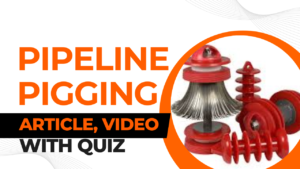1. Introduction
Stainless steel is an indispensable material in various industries due to its corrosion resistance and versatility. ASTM 316, a standard specification for stainless steel, ensures the quality and performance of this vital material.
Table of Contents
Do not miss the detailed course 7 Modules of Piping Codes & Standards
Enrollment link
Check out the Similar Articles on ASTM Standards
The Significance of Stainless Steel
Stainless steel plays a critical role in modern industrial applications, thanks to its resistance to corrosion, heat, and wear. It’s the backbone of many industries, including construction, food processing, and healthcare.
The Role of ASTM Standards
The American Society for Testing and Materials (ASTM) sets the bar for material quality. ASTM A316 is the benchmark for stainless steel, assuring its reliability and integrity.
2. Various Grades of ASTM 316
ASTM A316 includes several grades tailored to different applications.
Differentiation Based on Composition and Use
These grades differ primarily in their chemical composition and intended purpose, which dictates their mechanical and corrosion-resistant properties.
A Comparison of Key Properties (Table)
| Grade | Carbon Content (%) | Tensile Strength (MPa) | Corrosion Resistance |
|---|---|---|---|
| A316 | 0.08 max | 515 min | Excellent |
| A316L | 0.03 max | 485 min | Excellent |
| A316H | 0.04-0.10 | 515 min | Excellent |
3. Chemical Composition
A deep dive into the chemical composition of ASTM A316 stainless steel.
The Influence of Elements
Understanding the role of each element, such as carbon, chromium, and nickel, in the composition and properties of stainless steel.
Chemical Composition for Different Grades (in %)
| Element | A316 | A316L | A316H |
|---|---|---|---|
| Carbon (C) | 0.08 | 0.03 | 0.04-0.10 |
| Chromium (Cr) | 16-18 | 16-18 | 16-18 |
| Nickel (Ni) | 10-14 | 10-14 | 10-14 |
Do not miss the detailed course 7 Modules of Piping Codes & Standards
Enrollment link
4. Mechanical & Chemical Properties
A detailed exploration of mechanical and chemical properties makes for informed material selection.
Mechanical Properties
- Tensile Strength: The maximum stress a material can withstand while being stretched.
- Yield Strength: The stress at which permanent deformation begins.
- Hardness: Resistance to deformation, scratching, or wear.
Chemical Properties
- Corrosion Resistance: The ability to withstand chemical attack.
- Heat Resistance: Maintaining integrity at high temperatures.
| Property | A316 | A316L | A316H |
|---|---|---|---|
| Tensile Strength (MPa) | 515 min | 485 min | 515 min |
| Yield Strength (MPa) | 205 min | 170 min | 205 min |
| Hardness (Brinell) | 217 max | 217 max | 217 max |
5. Manufacturing Process
Understanding the manufacturing process behind ASTM A316 stainless steel ensures control over material properties.
Step-by-step Explanation
- Melting: High-quality raw materials are melted in an electric arc furnace.
- Casting: Molten steel is cast into various shapes.
- Hot/Cold Rolling: The cast steel is hot or cold rolled to achieve the desired dimensions.
- Heat Treatment: Heat treatment processes like annealing optimize material properties.
- Finishing: Final steps include cutting, polishing, and surface treatments.
The Emphasis on Controlled Processes
Precise control over each manufacturing step guarantees the desired material properties are achieved consistently.
6. Pros & Cons of ASTM 316
A balanced evaluation of the advantages and limitations of ASTM A316 stainless steel.
Advantages
- Corrosion Resistance: Ideal for harsh environments.
- Wide Temperature Range: Maintains strength at both high and low temperatures.
- Versatility: Suitable for diverse applications.
Limitations
- Cost: Generally more expensive than carbon steel.
- Availability: May be less readily available in some regions.
- Environmental Impact: Production can be resource-intensive.
Do not miss the detailed course 7 Modules of Piping Codes & Standards
Enrollment link
7. Applications of ASTM 316
A wide array of industries and applications benefit from ASTM A316 stainless steel.
Industries and Their Uses
- Chemical Processing: Resistant to corrosive chemicals.
- Food Industry: Hygienic and corrosion-resistant for food handling.
- Medical Equipment: Sterilizable and biocompatible.
- Architecture: Aesthetically pleasing and durable in architectural elements.
Highlighting Key Properties
The specific properties of ASTM A316 that make it well-suited for each application.
8. Codes & Standards
An explanation of the codes and standards that reference ASTM A316, emphasizing the importance of adherence.
Safeguarding Quality and Safety
- ASME Boiler and Pressure Vessel Code: Specifies materials for pressure vessels.
- ASTM A240/A240M: Covers ASTM A316’s requirements for general applications.
- ASTM A554: Focuses on ASTM A316 for ornamental tubing.
Industries and Organizations
Mentioning the industries and organizations that rely on these standards for material selection and safety assurance.
9. Quality Control & Testing
A comprehensive look at quality control measures during manufacturing and rigorous testing procedures.
Ensuring Material Integrity
- Chemical Analysis: Verifies elemental composition.
- Mechanical Testing: Validates mechanical properties.
- Non-Destructive Testing: Detects surface and internal defects.
- Microstructural Examination: Assesses material structure.
10. Standards & Certificates
An explanation of the various certificates that manufacturers can obtain for ASTM A316 materials.
The Significance of Certificates
- Mill Test Certificate: Provides material composition and mechanical properties.
- ISO Certification: Demonstrates adherence to international quality standards.
11. Ordering Information
Guidance on how to specify and order ASTM A316 stainless steel materials for precise delivery.
Essential Information
- Grade: Specify the appropriate grade (e.g., A316, A316L) for the intended use.
- Size: Specify dimensions (thickness, width, length) of the required material.
- Quantity: Indicate the quantity of material needed.
- Additional Requirements: Highlight any specific requirements like surface finish or special testing.
Do not miss the detailed course 7 Modules of Piping Codes & Standards
Enrollment link
Supplementary Testing Requirements
In addition to standard testing, some applications may necessitate supplementary tests such as:
- Creep Testing: Evaluates material behavior under constant load at high temperatures.
- Pitting Resistance Testing: Assesses resistance to localized corrosion.
- Intergranular Corrosion Testing: Detects susceptibility to intergranular corrosion.
These supplementary tests ensure ASTM A316 stainless steel meets the stringent demands of specific applications.
12. Comparison with Other ASTM Standards
A comparative analysis of ASTM A316 with other related ASTM standards aids in material selection.
Comparative Analysis
| Parameter | A316 | A304 | A312 |
|---|---|---|---|
| Corrosion Resistance | High | Moderate | High |
| Heat Resistance | Good | Good | Good |
| Mechanical Strength | High | High | High |
| Weldability | Good | Good | Good |
13. Conclusion
Summing up the key points discussed throughout the article, emphasizing the significance of ASTM A316 stainless steel in modern industries, and underlining its continued relevance and importance.
14. FAQs
A set of frequently asked questions for quick reference and clarification.
1. What is ASTM A316 stainless steel? ASTM A316 is a standard specification for stainless steel, known for its corrosion resistance and versatile applications.
2. What are the different grades of ASTM A316? ASTM A316 includes various grades, such as A316, A316L, and A316H, each tailored to specific applications.
3. Where is ASTM A316 stainless steel commonly used? It finds applications in chemical processing, the food industry, medical equipment, architecture, and more due to its corrosion resistance and durability.
4. How can I order ASTM A316 stainless steel? When placing an order, specify the grade, size, quantity, and any additional requirements to ensure you receive the desired material.
5. What supplementary tests may be required for ASTM A316 stainless steel? Depending on the application, supplementary tests like creep testing, pitting resistance testing, and intergranular corrosion testing may be necessary to meet specific requirements.
Recommended courses (Published on EPCLand):
- Basics of Piping Engineering
- Piping Layout Engineering
- Piping Material Engineering
- Piping Stress Analysis
- Complete Course on Piping Engineering
- Material Requisitions
- Piping Material Specifications
- Valve Material Specifications
Related Video
Attempt Quiz
Question 1:
What does ASTM A316 refer to?
Explanation: ASTM A316 is a standard specification for seamless and welded austenitic stainless steel tubing. It covers various grades of stainless steel tubing used in a wide range of applications.
Question 2:
What is the primary alloying element in ASTM A316 stainless steel?
Explanation: The primary alloying element in ASTM A316 stainless steel is Chromium, which contributes to its corrosion resistance and other desirable properties.
Question 3:
Which applications are ASTM A316 stainless steel tubes commonly used for?
Explanation: ASTM A316 stainless steel tubes are commonly used in applications that require corrosion resistance, such as cryogenic applications and certain chemical environments.
Question 4:
What is the key difference between ASTM A316 and ASTM A312?
Explanation: The key difference between ASTM A316 and ASTM A312 is that A316 is a specification for seamless and welded austenitic stainless steel tubing, whereas A312 covers both welded and seamless pipes.
Question 5:
Which properties make ASTM A316 stainless steel suitable for corrosive environments?
Explanation: ASTM A316 stainless steel exhibits high corrosion resistance, making it suitable for use in corrosive environments where it can resist degradation and maintain its structural integrity.



